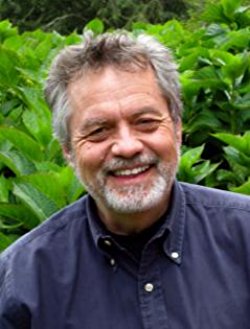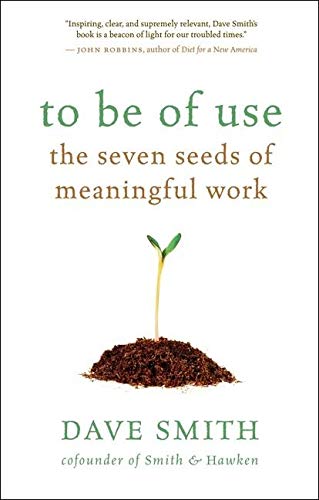2005 - Temperance the Briarpatch Way
Excerpted from To Be of Use by Dave Smith, 2005, pp. 115-117.
During the seventies and eighties, two businesses I co-founded, Briarpatch Cooperative Market and Smith & Hawken, were members of the Briarpatch Network, an informal business association centered in San Francisco. The network was a group of like-minded small-business owners who shared ideas and values about business.
I also cofounded a branch of the network on the San Francisco Peninsula soon to become famous as Silicon Valley, and met weekly with small local businesses at Jesse Cool’s Late for the Train restaurant in Menlo Park.
We were a thriving community that shared expertise and resources in the best tradition of mutual aid, and that periodically got together to square dance and whoop it up.
One key to Briarpatch values was the ability to live on less. By participating in a community that supported and valued frugality and rejected the symbols of material success and conformity that demanded one’s participation in their acquisition, we gained the freedom to experiment with alternative ways of doing business.
In short, changing the rules of the game made the game a lot more fun.
Radical political analysis had taught us the direct connection between the bombs we were dropping on other people and the materialist addictions of our culture. But rather than just protesting and picketing, we were creating new, alternative models for human livelihood.
Along with the values, we embraced voluntary simplicity in our personal habits, living conditions, and buying patterns, which made it possible to focus less time on generating income to pay the bills.
Crucial to living and working simply is the support of a community whose values we can, in return, admire and support. It includes the practical sharing of mutual needs and resources.
Rather than each member storing a growing heap of possessions in the garage or storage unit, the community itself became the repository of items not immediately needed, with objects circulated through active exchange and barter.
The Briarpatch Society was conceptualized in 1973 by Dick Raymond, a Harvard Business School graduate who gave up a successful conventional business career to create small nonprofits and other ventures, including the Portola Institute, a catalyst for several community-based groups and the first publisher of the revolutionary Whole Earth Catalog.
The Briarpatch Society consisted of people learning to “live with joy in the cracks,” Raymond says in The Briarpatch Book.
“But more particularly, if you are positively oriented and doing (or actively seeking) Right Livelihood, even willing to fail young, and concerned with the sharing of resources and skills with members of an ongoing community (or affinity group), and especially if you see yourself as part of a subsociety that is more committed to ‘learning how the world works’ than to acquire possessions and status, then you must be a Briar.”
The Briarpatch idea grew out of a time of doom and gloom, social tumult, value questioning, and high unemployment, a time when the demise of big business seemed imminent. [Raymond] saw the giant corporate dinosaurs unable to find food for their enormous profit-oriented appetites. He visualized a business apocalypse. He envisioned the Briarpatch as the social system for survival.
Briars would use the tools of living on less, sharing with each other, and learning through new small businesses. To this, Dick added the positive value of doing it all with joy.
In his vision, Briars were to be doing what they loved most, secure from the ravages of the crumbling culture around them. Their lack of material possessions and small-scale living would appear to others like real briar patches–thorny places so unappealing to the greedy people around them that, like Br’er Rabbit, Briars would be safe.
Another key for many of us was, and still is, the Buddhist concept of “right livelihood”—not right in the sense of conforming to a definition of right versus wrong, but right in that each of us is unique and has a distinctive contribution to make that is right for us and right for the community we participate in.
New models of living and working that hearkened back to the utopians of previous generations appealed to our values and enthusiasm for experimentation. The Lord of the Rings trilogy was popular reading, and the philosophy of Dick’s hobbitlike Briarpatch Society repudiated and replaced the values of the society we were disillusioned with.
Briarpatch values continue to live in many hearts, and some of its management practices have been successfully incorporated in businesses far and wide. A Briarpatch Cooperative Market still thrives in Grass Valley, California. (For more on the history, the businesses involved, and ongoing evolution of the Briarpatch Network, please see www.briarpatch.net and www.briarpatchcoop.com.).
The seventies predictions of devastating energy shortages were only briefly manifest, and the giant corporate MegaMaws are still gulping down large swaths of business terrain, expanding into all the world to preach the gospel of raw capitalism. The day of reckoning has been postponed, yet the signs of serious difficulties ahead continue to be manifest.
For Briarpatch businesses, mutual aid and the free exchange of knowledge and equipment allow small businesses to open with very little capital. Some of them have also been financed by their customers through direct public offerings (DPOs) and other innovative financings (see for example www.diamondorganicsshares.com).

